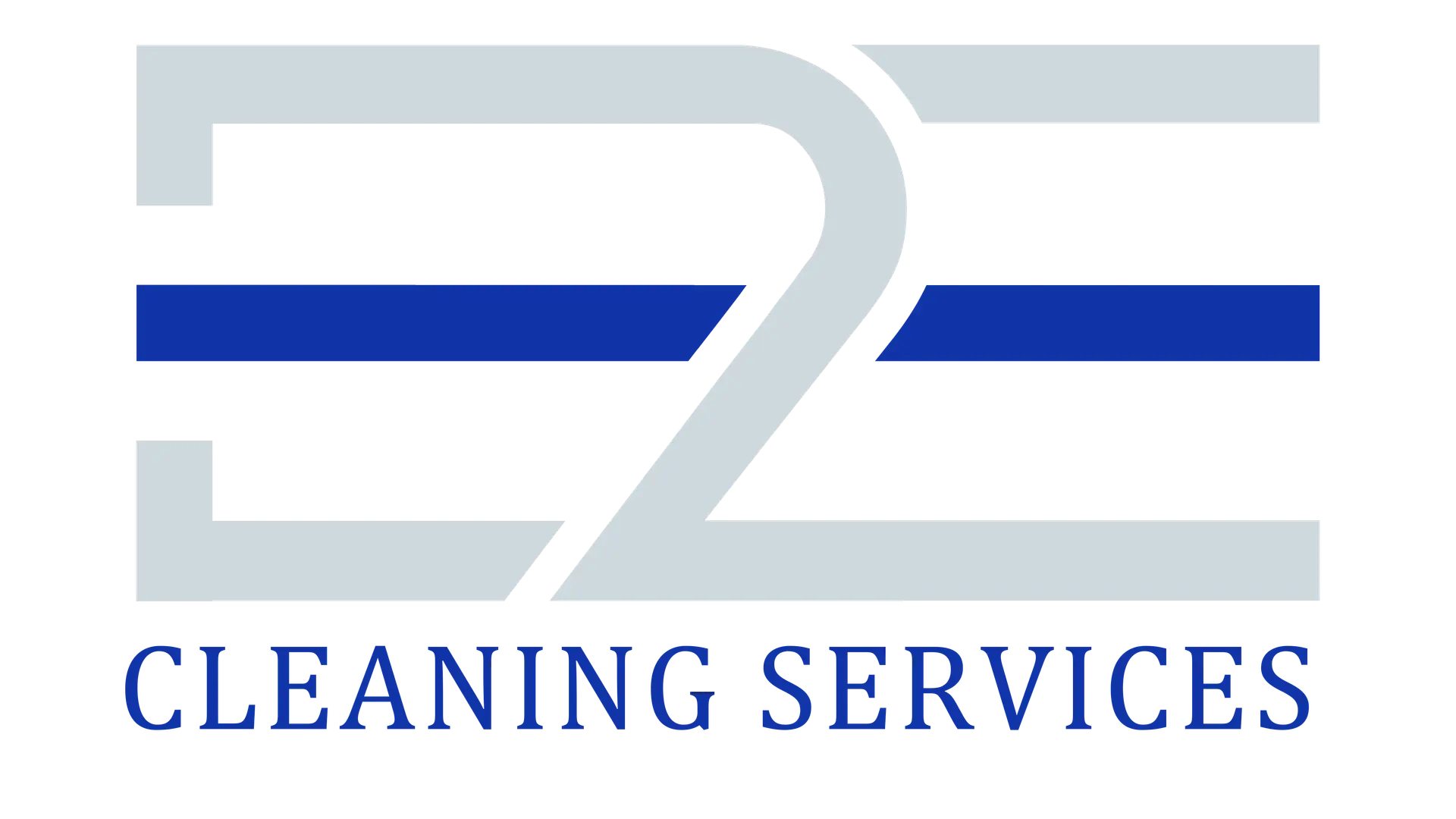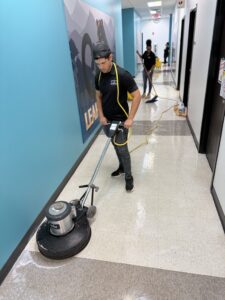Businesses in Tampa need to thrive and one of the ways to do so is to maintain a clean and organized workspace. An office that is not clean can affect productivity, absenteeism of employees and company reputation. This guide is a comprehensive look at cost effective ways of optimizing cleaning processes, adopting eco-friendly practices and maximizing efficiency while adhering to industry standards.
Implementation of the strategies, suggested in this article can enhance the office cleanliness, employee productivity and thereby decrease the business operational cost.
The Hidden Cost of Poor Office Cleaning
Not taking care of office cleanliness has consequences beyond just aesthetics, and can lead to huge financial and operational effects. Poor cleaning practices can result in increased employee health issues, productivity losses and damaged client relationships and so not only threaten a company’s bottom line.
Productivity Losses
An untidy office does not let an employee focus and concentrate on his work, which, in turn reduces productivity. Dust buildup and poor ventilation leads to poor indoor air quality and can worsen respiratory problems, and fatigue/ discomfort employees experience.
In addition, poorly maintained office equipment, damaged equipment, not only slows down the efficiency of work but also brings about costly repairs or replacements.
Employee Health Implications
Florida’s warm and humid climate can make an office a breeding ground for germs, bacteria and viruses if office cleanliness is neglected. Failure to maintain good sanitization in the high touch areas like door handles and office equipment mean increased risk of getting infected. As a result, businesses may have higher absenteeism, lower productivity and mounting health costs.
Impact on Client Impressions
It is very important for having a good impression on visitors and clients that your Office Space should be clean and well maintained.
A cluttered or unkempt environment suggests to a potential client that the company is not professional and not paying enough attention to its detail work, that could seriously make a client not want to do business with the company.
In a competitive market, a bad office appearance can damage a business’s reputation and its ability to get new clients.
Let us make your workspace clean. Click Here
Best Practices for Essential Office Cleaning
Businesses must develop robust cleaning protocol in order to keep a clean and healthy work place.
Here are some essential office cleaning best practices to consider:
High-Traffic Area Maintenance
Where there is more high traffic or foot traffic in lobbies and hallways, and break rooms, they need to be cleaned and sanitized on a more regular basis to stop the spread of germs and to keep the appearance uniformed.
To avoid spreading germs through the workplace clean all surfaces on a regular basis such as door handles, countertops, and shared work equipment.
Sanitization Protocols for Healthcare Specific
In the healthcare industry, sanitization protocols are essential in any healthcare facility such as doctor’s office, clinic and hospital respectively to guarantee patient safety and must observe healthcare facility standard. These commonly required protocols generally include the use of concentrated, specially formulated disinfecting chemicals designed for a specific surface, in an effort to adequately kill harmful microorganisms.
Cleaning Requirements for Retail Space
Cleanliness of retail spaces has to be carried out in the stores, shopping centers not less thoroughly so as to provide clean and safe environment for the customers. If you’re experiencing high traffic areas, you want to pay particular attention to things like entrances, fitting rooms and checkout counters.
Floor cleaning, merchandise organization and display maintenance are regular requirements that help create an inviting and professional shop.
Corporate Office Standards
Corporate offices should ensure for regular cleaning and maintenance because a clean work area plays essential role for employee’s productivity. This may be hourly, nightly, or periodic deep cleaning, and on going maintenance to common areas, like conference rooms and break rooms.
Following cleaning standards and protocols you can guarantee consistency and also assist with maintaining a professional office environment.
Efficiency in Professional Cleaning
Efficient cleaning processes can be key to reducing labor costs and greatly increasing productivity. Here are some strategies to maximize efficiency in professional cleaning:
Cleaning Schedules That Save You Time
Nightly cleaning or early morning can be a marked time saver, getting employees into a clean and organized environment without having to spend the morning tidying. By this method it is possible to reduce the level of disruption and the fact that cleaning tasks will be made during off times.
Task Prioritization Methods
By first identifying the frequency and importance of specific cleaning tasks, we can prioritize the tasks to be cleaned, and thereby optimize the cleaning process, and cut labor costs.
Sanitizing high touch surfaces, and cleaning common areas, should be done daily, with other less frequent tasks, like a deep cleaning of carpets or washing windows being done on a more periodic basis.
Smart Resource Allocation
Eco friendly and cost effective cleaning products, and buying supplies in bulk can help reduce overhead costs of cleaning operations. Trainers also will train staff on the proper ways to use and dilute cleaning supplies so that they will be at their most efficient and will not be supplies wasted.
Equipment and Supply Optimization
Modern cleaning technologies—such as sensor monitored dispensers or automatic scrubbers—can cut the need for labor and better clean. Maintaining and replacing aging equipment on a regular basis can also yield cost savings by also improving performance.
A Scalable Cleaning System
To maintain consistent and efficient cleaning policies, businesses need to create a scalable cleaning system that can adapt when needs change and as businesses grow.
Here are some key components of a scalable cleaning system:
Standard Operating Procedures
This is especially true with developing Standard Operating Procedures (SOPs) for the cleaning tasks that you want to get done to help ensure that you are being consistent and achieving quality across all your cleaning operations.
SOPs should cover the step by step instructions for a number of different cleaning tasks, required cleaning products, cleaning equipment, and cleaning techniques, as well as safe protocols.
Staff Training Frameworks
Training staff is where you need to invest if you want to ensure high cleaning proficiency and protocols follow through stay in place.
A good training framework needs to cover everything from correct cleaning techniques, to handling of chemicals, to safety procedures and to customer service training.
Quality Management Practices
Quality control measures including cleanliness audits and performance metrics are introduced to evaluate the efficiency of cleaning strategies, and the dimension for potential improvement.
Feedback from employees and clients as well as regular inspections can offer useful ways of refining processes as you learn more about what is going on.
Documentation and Checklists
Detail documentation, as well as checklists can help to make sure cleaning tasks are completed fully and evenly.
Checklists will give cleaning staff a reference to help ensure all tasks are completed and a record of what has been completed, which aids in better accountability and ensuring quality.
Cost-Effective Solutions for Tampa Businesses
In Tampa, businesses need to implement cost effective cleaning strategies to keep their work environment clean and productive while keeping operational costs in check.
Here are some cost-effective solutions to consider:
Budget Planning Strategies
As long as you look at current cleaning costs in the detail that they deserve and set specific cost reduction goals, you will find areas where you can save. To optimize their cleaning budgets, businesses need to take a careful look at their cleaning needs, prioritize tasks and allocate their resources accordingly.
Vendor Selection Criteria
Choosing cleaning service providers that are cost effective, efficient, and eco-friendly can help cut costs and still get high quality cleaning services. Businesses should analyze and decide among vendors based only on finding suitable services and better environmental practices.
Bulk Supply Management
Buying cleaning supplies in bulk can greatly cut overhead expenses and keep a good supply of these materials on hand. Businesses should only use certified suppliers who will help them negotiate bulk pricing and also ensure that businesses have efficient inventory management systems to avoid waste and overstocking.
Techniques of Resource Optimization
Improving in cleaning processes and the application of the most recent cleaning technologies reduce costs of labor and increases in efficiency.
Methods of task scheduling, route optimization, and equipment maintenance can help costs be saved and cleaning standards remain high.
Professional Standards and Compliance
This includes analyses with both primary and secondary data on issues relating to professional standards and compliance. It’s vital to follow professional standards and industry regulations as to make the work place safe and secure.
There are few key considerations for businesses:
Industry Regulations
We recognize that cleaning practices differ around different sectors like healthcare, retail and corporate offices because of different regulations and standards. This means that businesses are legally required to ensure they remain informed of, and comply with, relevant regulations in order to avoid penalties and ensure health and safety within their working environment.
OSHA Requirements
Occupational Safety and Health Administration (OSHA) has rules concerning the safety of the workplace, for example, recommendations for the cleaning and maintenance procedures. OSHA regulations are there for a reason and meeting them is integral to providing a safe and healthy place for employees to work at but also to prevent possible liabilities with your business.
Healthcare Facility Standards
To comply with strings sanitization protocols and measures set by the governing bodies like the Centers for Disease Control and Prevention (CDC) and the Joint Commission healthcare facilities (hospitals, clinic, and nursing home) must follow. However, these standards are intended to help stop the spread of infections and to ensure patient safety.
Environmental Considerations
Businesses can adopt eco friendly cleaning practices that may reduce the environmental impact and may even reduce costs. It might include using eco-friendly cleaning products, setting up recycling programs, and encouraging the use of energy efficient practices.
Measuring Success and ROI
To understand the effectiveness of the deployed cleaning strategies and to prove the reason for the investment, business should have a frame to assess the success and return on the investment.
Cleanliness Audit Systems
The cleanliness audit systems can be used to evaluate the effectiveness of cleaning strategies and uncover areas where improvements can be made. The audits can include visual inspections, surface testing and feedback from employees or clients as to the amount of cleanliness and hygiene in the work environment.
Performance Metrics
Performance metrics like cost saving calculations and productivity measurements can make it easier for businesses to see what the impact of their cleaning strategies will be to their bottom line.
Some of these metrics could reduce absenteeism, improve employee productivity and cost savings got from more efficient cleaning methods.
Cost-Saving Calculations
Regular cost saving calculations can be done to help businesses to track and adjust their cleaning budget. It can include the analysis of current costs vs. prior period costs, investigation of the results of implemented cost saving programs, and identification of potential cost savings.
Tracking Productivity Improvements
Businesses can use tracking productivity improvements to measure how a clean workspace can affect workers health and performance. It may be monitoring anything from task completion rates to error rates, to employee satisfaction surveys to measure how a clean and organized work environment has a positive effect.
Final Thoughts
With today’s competitive environment, businesses in Tampa must keep a clean and organized workplace in order to thrive. Companies can change the way they clean their furniture and make the environment friendly using these strategies outlined in this article.
Companies should focus on policies for overall cleaning; regarding its focus operations, such as: high traffic areas, healthcare specific cleaning, retail space cleaning requirements, corporate office cleaning standards. etc. Further, if you can leverage time saving cleaning schedules, task priority, smart allocation of resources and optimize equipment, you can drastically increase efficiency of whatever your business operations is and prevent detrimental costs.
Moreover, if businesses want long term success, they must develop scalable cleaning systems that feature standardized operational procedures, staff training frameworks and quality control, and documentation systems.
Businesses in Tampa, can be provided with cost effective solutions such as budget planning strategies, vendor selection criteria, bulk supply management and resource optimization techniques to enable them achieve their cleaning goals on a budget.
Having clean and healthy workspaces to work in can help businesses create a productive and motivated workforce, maintain a good reputation and lead to overall business success.
By following the best practices outlined in this article, you will not only increase productivity but also help create a safer, more sustainable, and cost effective operational environment.






